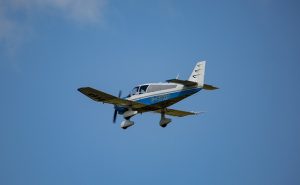
Have you heard of light sport aircraft (LSA)? Airplanes are often classified according to their size or purpose. Airliners, for instance, are large airplanes that are designed to transport goods and passengers. Some of them have a single aisle of seats, whereas others have two aisles of seats. LSA is a separate classification that’s intended for smaller airplanes. To learn more about LSA, keep reading.
Overview of LSA
LSA is a category of small and lightweight airplanes designed for recreational purposes. They aren’t operated by commercial airliners. Instead, they are privately owned and piloted.
The small and lightweight characteristics of LSA make them a popular choice for new pilots. LSA are easier to fly, require less training and cost less than larger types of aircraft.
Examples of LSA include the following:
- Cessna Skycatcher
- Flight Design CTLS
- Pipistrel Virus
- BRM Aero Bristell
- Remos GX
- SWVans RV-12
Common Features of LSA
While there are many different types of LSA, they share some common features, such as being lightweight. For an airplane to be classified as an LSA, it must weigh no more than 1,320 pounds. Land-based airplanes with a higher maximum takeoff weight (MTOW) can’t be classified as LSA.
LSA are also limited to two seats. They typically have one seat for the pilot and another seat for the copilot or passenger. Airplanes with more than two seats can’t be classified as LSA.
With their relatively small size, LSA aren’t particularly fast. Most of them have a maximum speed of 138 mph. Commercial airliners, in comparison, can reach speeds as fast as 600 mph. When their flaps are deployed, LSA must be also able to reach speeds of 52 mph without stalling.
LSA vs Ultralight Aircraft: What’s the Difference?
LSA isn’t the same as ultralight aircraft. As the name suggests, ultralight aircraft weigh even less than their LSA counterpart. Ultralight aircraft have a lower MTOW as defined by the U.S. Federal Aviation Administration (FAA).
The FAA requires pilots to obtain a Sport Pilot Certificate or higher to pilot a LSA. Certification for ultralights, on the other hand, varies depending on the jurisdiction.
LSA also have more features and capabilities than ultralight aircraft. They are more complex than ultralight aircraft, which typically makes them more versatile.



